Reencuentro con Cranach. Pintores Célebres #1.
Los cuadros de Lucas Cranach el Viejo son fascinantes. Una pintura suya me quedó impactada en la memoria desde el mismo instante que la vi. Hace justamente un año, en el Museo de Bellas Artes de Bilbao, me quedé varado ante Lucrecia.
Ahora, en Estocolmo, apareció de nuevo Cranach ante mi. No tuve que leer la descripción de la etiqueta para saber que él era el autor.
La descripción me confirmó que el cuadro titulado “El pago” era de Lucas Cranach el Viejo. Esta vez, nuestro encuentro se dio en el Museo Nacional de Estocolmo.
Mire hacia los lados y vi que había expuestos tres cuadros mas de él. Una emoción especial corrió por mi espalda. Son pinturas para paladearlas despacio, como un buen vino, porque están llenas de matices y detalles.
El anciano realiza una transacción económica con una mujer joven. Hay un claro contraste entre la vejez y la juventud. Aunque no es explícito, tal vez el trato resida en sus favores sexuales pues el viejo encaja su mano con fuerza en la de ella.
Estas escenas fueron frecuentemente reflejadas en el Renacimiento. La joven no parece estar descontenta e incluso da a entender que el trato es justo, pues ella sostiene una balanza equilibrada con la otra mano.
Lucas Cranach el Viejo fue un pintor alemán del renacimiento nacido a mediados del siglo XV (1472). Fue el padre Lucas Cranach el Joven que también fue pintor y que incluso trabajó con él en un taller conjunto.
Inicialmente, Lucas Cranach el Viejo ganó su reputación decorando las paredes de palacios de los palacios de Coburgo y Locha. Así, adquirió fama por su meticulosidad y realismo.
Sus primeros motivos fueron escenas de caza y pastoriles. Mas tarde, por su gran reputación alcanzada, viajó a Holanda en 1509 y estuvo al servicio de el emperador Maximiliano I y Carlos V.
Aunque inicialmente Lucas Cranach el Viejo era católico, mas tarde se convirtió al luteranismo. Fue parte importante en la promoción de esta fe, puesto que realizó retratos y grabados de Martín Lutero.
La especialidad de Lucas Cranach el Viejo fueron la realización de retratos, escenas religiosas y temas mitológicos.
En el Museo Nacional de Estocolmo hay una pintura que perteneció a la colección Gustav Vasa. Se trata de “ The feeding of 5000”. La gente en multitud tiene un lugar muy preponderante en este cuadro. Cranach intentó representar el gran valor que tiene el pueblo para la Iglesia Protestante.
Como describe el Nuevo Testamento, Jesús el “Milagro de los panes y los peces” para alimentar a una multitud de feligreses que le seguía.
En el cuadro, el niño con la cesta de peces representa este evento de la vida de Jesucristo.
Los pequeños tules y sedas trasparentes que cubren las caras de las mujeres que portan sus hijos, me fascinaron. Me recuerda a la técnica para pintar que utilizaba Leonado da Vinci y denominada el “esfumato”.
Justo al lado, hay otra pintura maravillosa de Cranach. Refleja el pasaje del Nuevo Testamento en el que Jesús defiende a una mujer encontrada en adulterio. En la escena, Jesucristo se encara con el pueblo. Es cuando les reta: quien esté libre de pecado que tire la primera piedra. Cristo se ofende ante la justicia aplicada con doble rasero.
Todos estos cuadros han llegado hasta el Museo Nacional de Estocolmo porque formaban parte de la colección privada del rey Gustav Vasa en el castillo de Gripsholme.
Lucas Cranach el Viejo eligió la mitología porque le permitía introducir desnudos femeninos en sus pinturas. De hecho, fue el primer artista del norte de Europa que pintó a Venus sin ropa.
Lucas conocía que las veladas transparencias ocultando el pubis de la mujer tenían incluso un efecto sensual mas potente que si Venus no tratara de cubrirse. Sutilmente intentó provocar más con el desnudo.
Su arte tuvo gran éxito y por ello representó a Venus junto a Cupido en múltiples ocasiones. Al parecer, hay uno de estos cuadros en Madrid, en el Museo Thyssen. Cuando vuelva allí, sin duda iré a verlo.
Lucrecia ha sido violada y mancillada, por eso introduce su fina daga en su humilde corazón. No puede vivir ante la sociedad con ese pecado involuntario.
Este es el cuadro que encontré en Bilbao y que tanto me conmueve. Los finos detalles son tan sutiles que parecen imposibles de realizar técnicamente.
Me quedo absorto observando su pintura delicada. Para conseguir el efecto de las trasparencias, que tanto me cautivan, Lucas tenía que aplicar progresivamente múltiples capas de pintura al óleo. Con primor, incorporaba nuevas pinceladas muy diluidas y finas. Realizó un trabajo lento y esmerado.
Las mujeres que Cranach son muy características y particulares. Se podría decir que introdujo un “canon” especial de la figura de la mujer. Las dibujó jóvenes, muy estilizadas, con largas piernas, ojos almendrados y pequeños senos. Me recuerdan a los rasgos orientales.
Lucas Cranach el Viejo fue un pintor muy prolífico que mantuvo su nivel de calidad siempre muy alto. Solo decayó algo en la última época cuando compartió taller con su hijo Lucas Cranach el Joven.
La vida de Cranach el Viejo se vio ligada a la de sus ideales religiosos. El emperador Carlos V derrotó a los ejércitos protestantes en la batalla de Mühlberg (1547), lo que obligó a Lucas Cranach el Viejo a exiliarse en Weimar donde falleció en 1553.
Espero, con esta publicación, haberos mostrado un pintor muy especial y no demasiado conocido que a mi me fascina.
Reencounter with Lucas Cranach the Elder
The paintings by Lucas Cranach the Elder are fascinating. A painting of his was impacted in my memory from the moment I saw it. Just a year ago, at the Museum of Fine Arts in Bilbao, I was stranded before Lucrecia.
Now, in Stockholm, Cranach appeared again before me. I did not have to read the description on the label to know that he was the author.
The description confirmed that the box titled "The payment" was by Lucas Cranach the Elder. This time, our meeting was held at the National Museum in Stockholm. I looked to the sides and saw that there were more pictures of him. A special emotion ran down my back. They are paint to taste slowly, like a good wine because they are full of nuances and details.
Elderly man makes an economic transaction with a young woman. There is a clear contrast between old age and youth. Although not rs esplicito maybe the deal resides in his sexual favors because the old fits his hand tightly in hers. These scenes were frequently reflected in the Renaissance. The young woman does not seem to be dissatisfied and even implies that the deal is fair because she holds a balanced balance with the other hand.
Lucas Cranach the Elder was a German Renaissance painter born in the mid-15th century (1472). It was Father Lucas Cranach the Younger who was also a painter and who even worked with him in a joint workshop.
Initially, Lucas Cranach the Elder gained his reputation by decorating the palaces walls of the Coburg and Locha palaces. Thus, he acquired fame for his meticulousness and realism.
His first motives were hunting scenes and pastoral scenes. Later, due to his great reputation, he traveled to the Netherlands in 1509 and was at the service of Emperor Maximilian I and Charles V.
Although Lucas Cranach the Elder was initially Catholic, he later became a Lutheran. He was an important part in the promotion of this faith, since he made portraits and engravings of Martin Luther.
The specialty of Lucas Cranach the Elder was the realization of portraits, religious scenes and mythological themes.
In the National Museum of Stockholm there is a painting that belonged to the Gustav Vasa collection. It is "The feeding of 5000". People in multitude have a very preponderant place in this picture. Cranach tried to represent the great value that the people have for the Protestant Church.
As described in the New Testament, Jesus the "Miracle of the loaves and fishes" to feed a multitude of parishioners who followed him. In the picture, the child with the basket of fish represents this event of the life of Jesus Christ.
The small transparent tulles and silks that cover the faces of the women who carry their children, fascinated me. It reminds me of the painting technique used by Leonado da Vinci and called the "esfumato".
Right next door, there is another wonderful painting by Cranach. It reflects the New Testament passage in which Jesus defends a woman found in adultery. In the scene, Jesus Christ faces the people. It is when he challenges them: whoever is free from sin throws the first stone. Christ is offended by justice applied with double standards.
All these paintings have reached the National Museum of Stockholm because they were part of the private collection of King Gustav Vasa in the castle of Gripsholme.
Lucas Cranach the Elder chose mythology because it allowed him to introduce female nudes in his paintings. In fact, he was the first artist from northern Europe who painted Venus without clothes.
Lucas knew that the veiled transparencies hiding the woman's pubis even had a more powerful sensual effect than if Venus did not try to cover herself. Subtly tried to provoke more with the nude.
His art was very successful and therefore represented Venus with Cupid on multiple occasions. Apparently, there is one of these paintings in Madrid, in the Thyssen Museum. When I get back there, I'll definitely go see it.
Lucrezia has been violated and tainted, that is why she introduces her fine dagger in her humble heart. He can not live before society with that involuntary sin.
This is the picture that I found in Bilbao and that moves me so much. The fine details are so subtle that they seem impossible to perform technically.
I am absorbed watching his delicate painting. To achieve the effect of the transparencies, which captivate me so much, Lucas had to progressively apply multiple layers of oil paint. With exquisite, incorporated new brushstrokes very diluted and fine. He did a slow and careful work.
The women that Cranach are very characteristic and particular. It could be said that he introduced a special "canon" of the figure of the woman. He drew them young, very stylized, with long legs, almond shaped eyes and small breasts. They remind me of oriental features.
Lucas Cranach the Elder was a very prolific painter who kept his level of quality always very high. Only something fell in the last period when he shared a workshop with his son Lucas Cranach the Younger.
The life of Cranach the Elder was linked to that of his religious ideals. Emperor Charles V defeated the Protestant armies at the Battle of Mühlberg (1547), forcing Lucas Cranach the Elder into exile in Weimar where he died in 1553.
I hope with this publication to have shown you a very special and not too well-known painter that fascinates me.
Bibliografía/Reference Cranach
Cómo lo hago
Las fotografías estaban permitidas en los museos donde las realicé. Lucrecia es parte del fondo pictórico del Museo de Bellas de Bilbao. Las demás las tomé en el Museo Nacional de Estocolmo.
Hice las fotografías con mi iPhone 6 y mi iPhone X. Para la edición utilicé la aplicación Snapseed y para la firma digital usé la App Watermark.
Los dibujos los hice en el iPad con el programa Sketches.
The photographs were allowed in the museums where I made them. Lucrecia is part of the pictorial collection of the Fine Museum of Bilbao. The others I took at the National Museum in Stockholm.
For the photography I use my iPhone 6 and my iPhone X. For edition I use the Snapseed application and for the digital signature the Watermark app.
Everything I did on my mobile phone, I did not use the computer at all.
For the drawings, I use the Sketches program and paint them on the tablet.
Si quieres ver como lo hago, visualiza estos tres enlaces de publicaciones previas.
If you want to see how I do it, visualize these three links from previous publications.
Original design for @talentclub de @carlos-cabeza
Las fotos son mías y originales. También, soy el autor del dibujo separador.
¡Espero tus comentarios!
The photos are originals and mine. Also, I am the author of the separator drawing.
I await your comments.
¡Buen Camino!
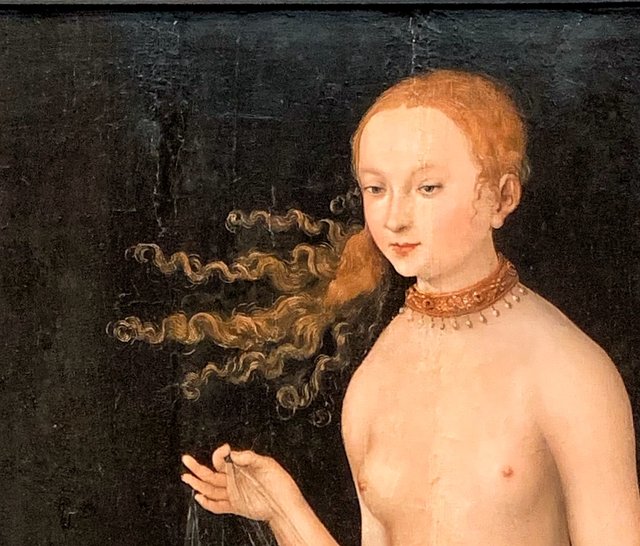
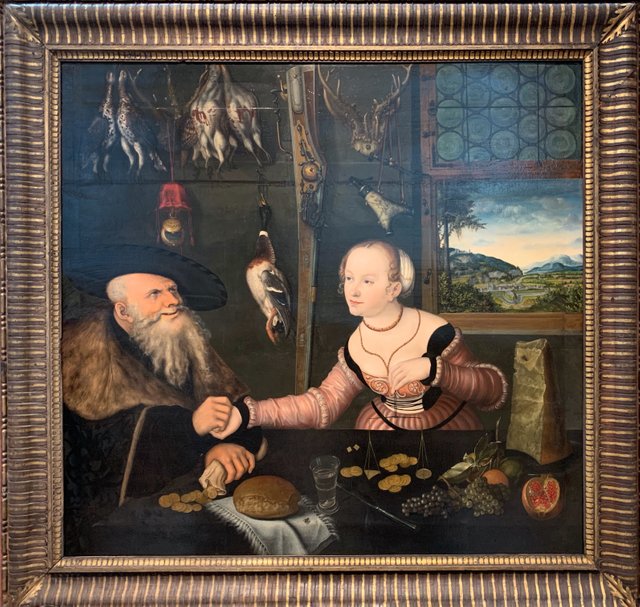
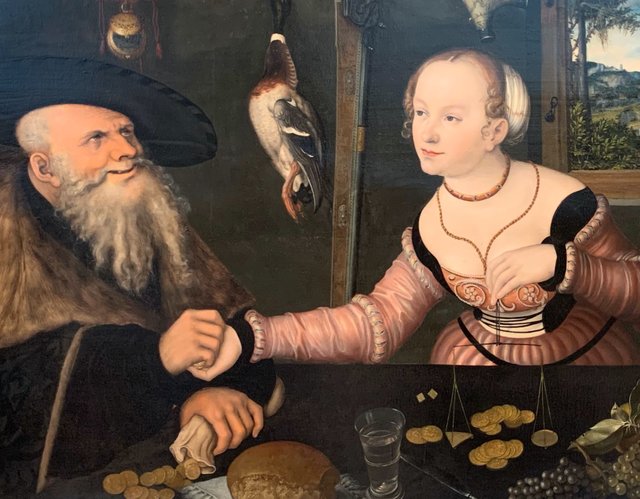
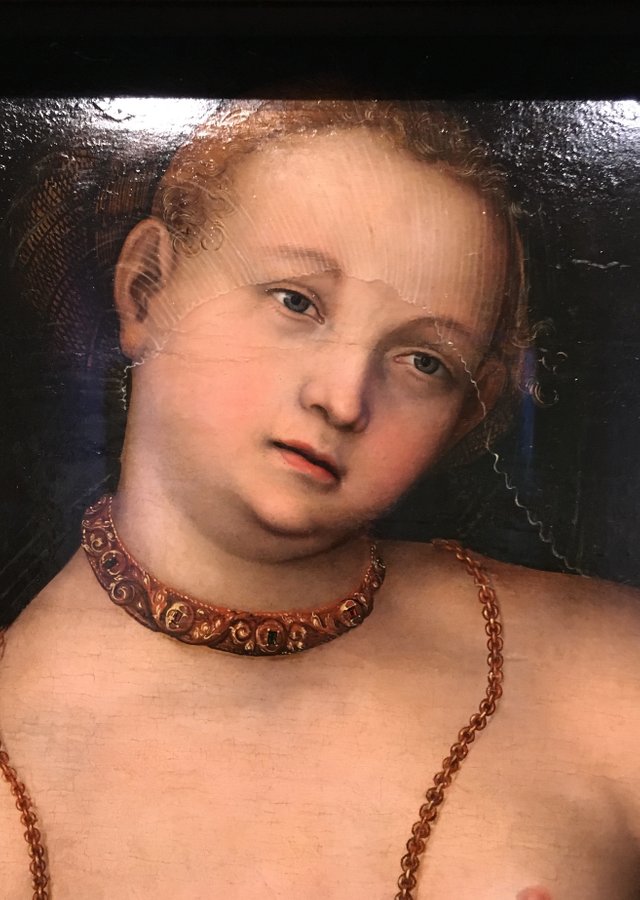
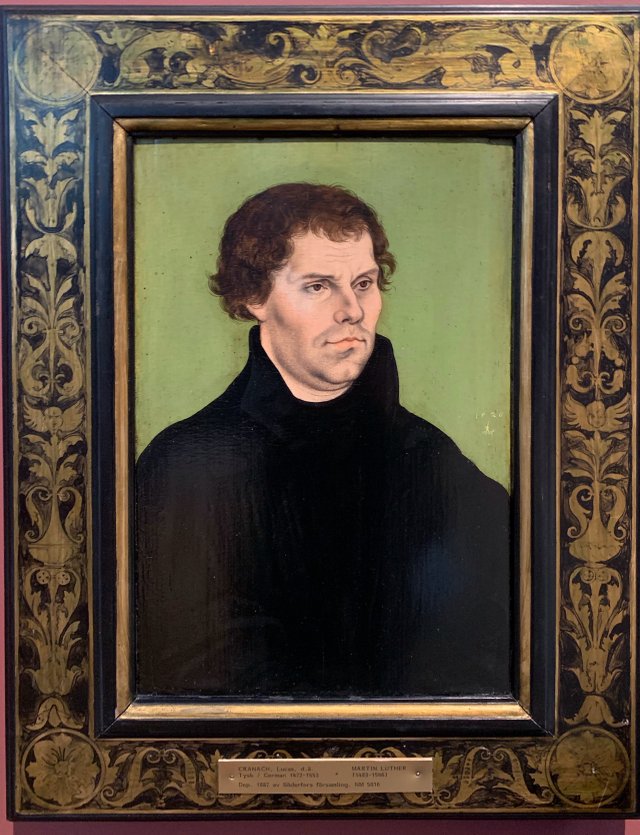
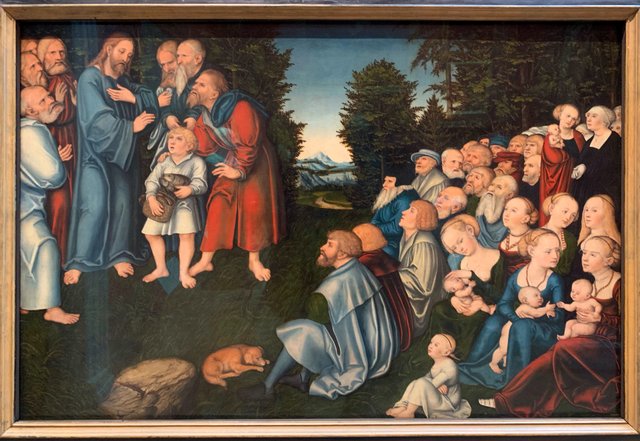
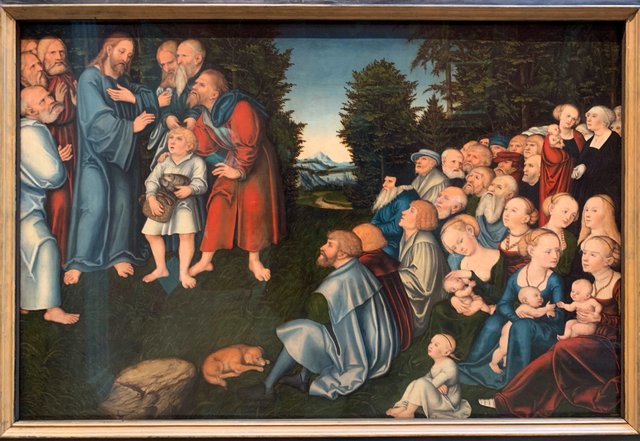
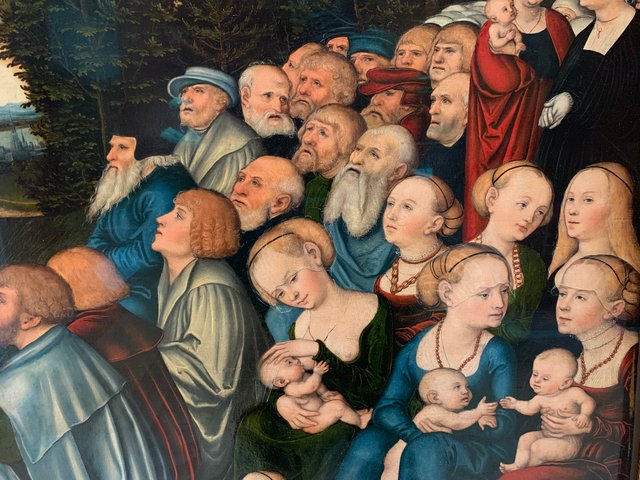
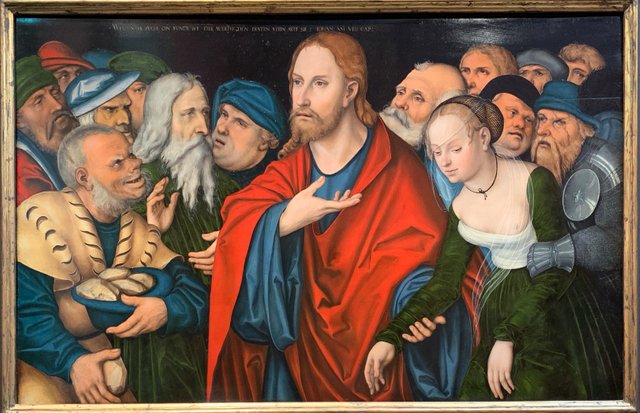
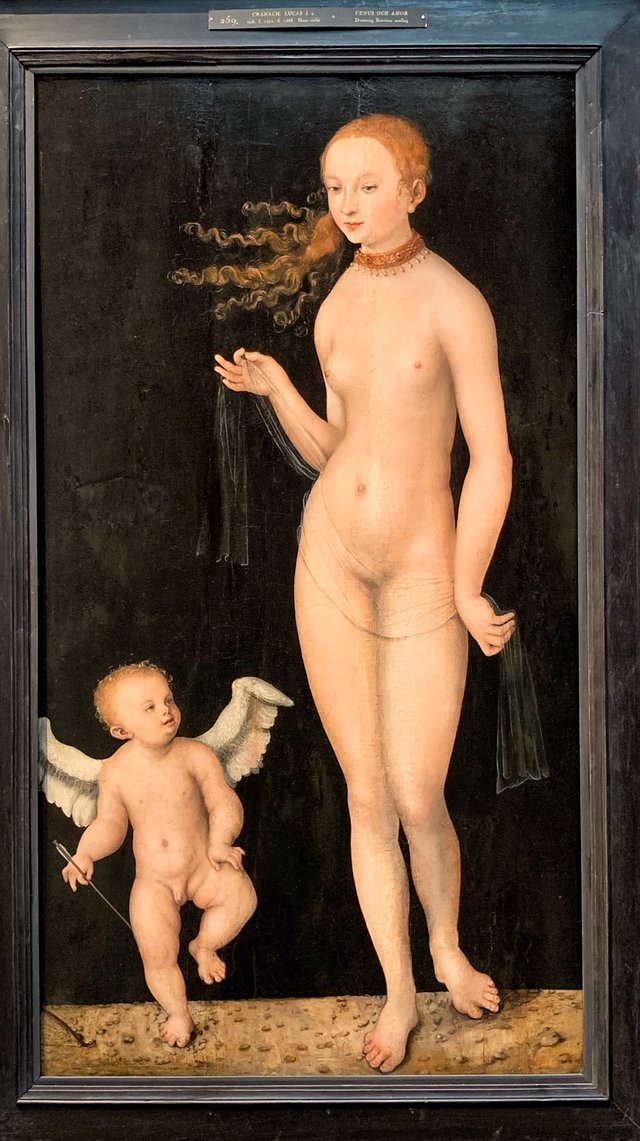
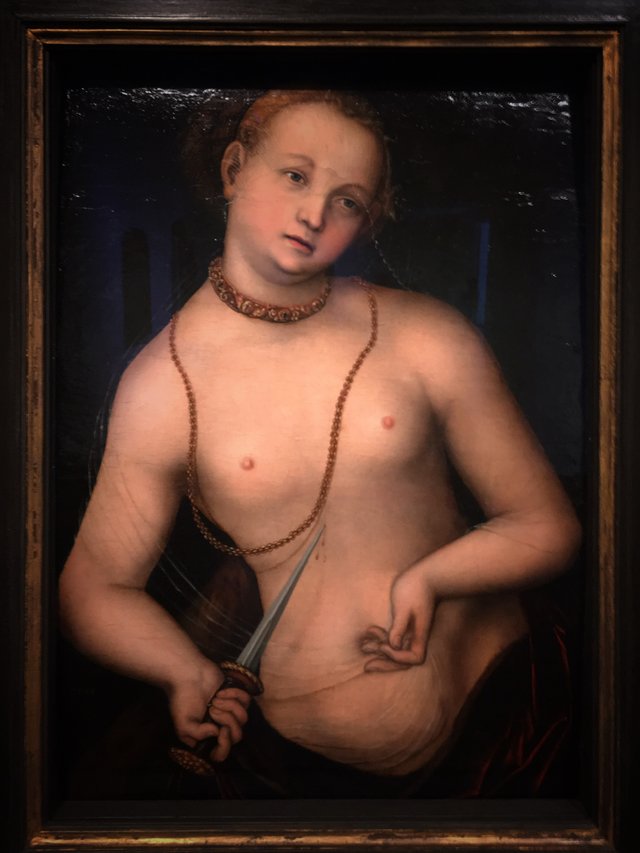
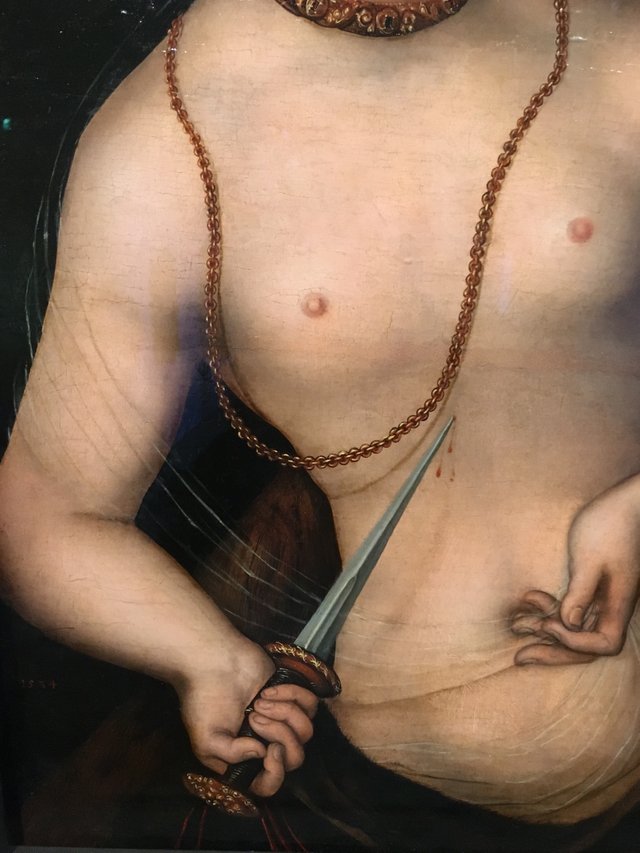
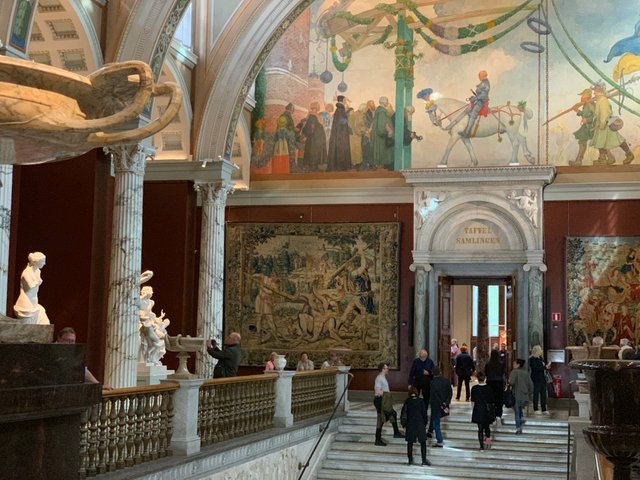
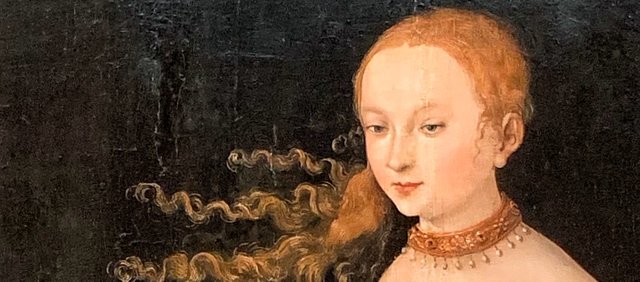

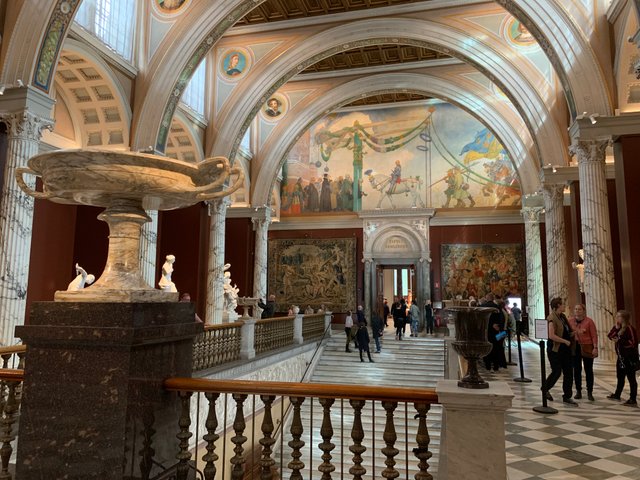
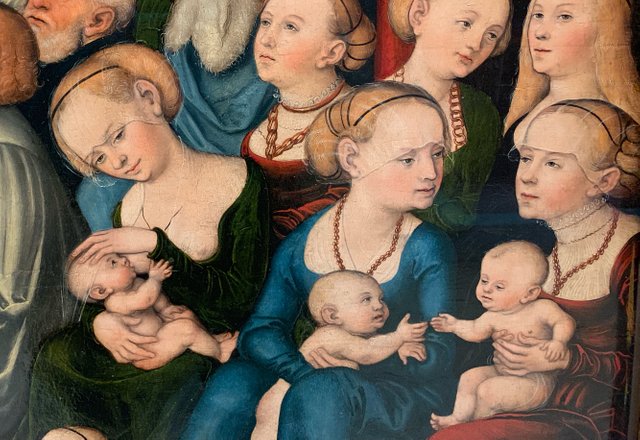
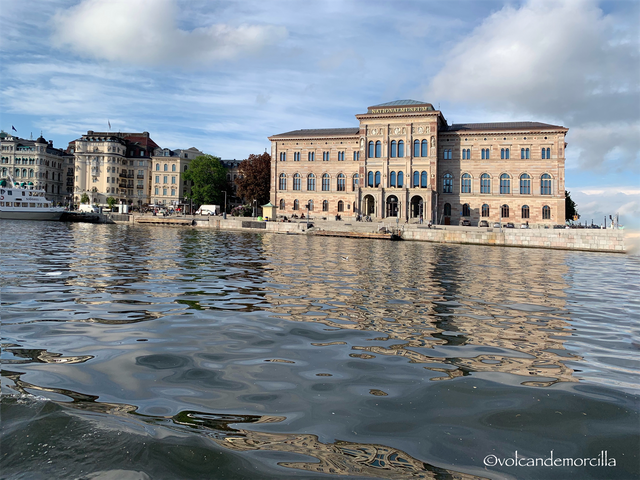
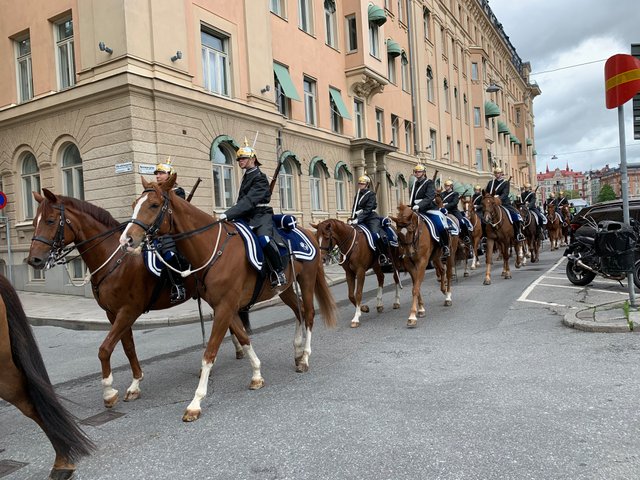



Hermoso trabajo del pintor nos has traído, gracias por permitirnos ver y llegar a esos lugares tan lejanos y aprender sobre ellos. Estoy fascinada por las pinturas, los desnudos y la forma profesional con la que nos explicas.
En relación al cuadro donde opinas:
Tengo la misma percepción que tú, me parece explícito, deja ver una transacción sobre placeres de la carne.
También concuerdo contigo, es que supongo que las pinturas son al oleo, y dibujar con oleo con tal perfección, exactitud de trazos, es muy pero muy difícil. Sencillamente ese sr fué un mago con el pincel.
Gracias mi querido Volcán.
Muchas Gracias. Me encanta que te guste este pintor. Es de esos que empiezas a mirar detalles y no terminas nunca. Un prodigio
Tal vez en España no se conozca mucho por ser un proscrito al ser protestante... quizás
Un abrazo 🤗
Posted using Partiko iOS
Como siempr espectacular. El cuadro del pago llamó mi atención, pensé que sería por los favores porque no vi nada que me reflejara la venta de algo; además de la expresión insinuante del viejo.
En esa época el mensaje era muy sutil, nada explícito como es ahora. Me gusta más, es mas simbólico y abierto a la imaginación e interpretación. Un abrazo 🤗
Posted using Partiko iOS
Hermosas punturas. Tienen esos detalles de los que habla y se notan muchísimo. Estos artístas son de alta talla y calidad. El relismo en esas obras impresionan. Gracias por esta nueva información.
Intenté hacer una publicación un poco mas cultural, que nunca viene mal...
Gracias por tu apoyo y valoración, lo aprecio mucho. Un abrazo amiga. 😊
Posted using Partiko iOS
Muchas Gracias amigos 😊
Posted using Partiko iOS
Ahora que recuerdo, a Lima ha llegado la exposición de pinturas con una mezcla de realidad virtual de Leonardo DaVinci, me iré a dar mi vuelta al museo este fin de semana, ya que según me dicen, está genial. Ya tendré la oportunidad de ir hasta Francia para admirarlos en el futuro jajaja. Espera mi post con las fotos :D
Por lo demás, este toque de cultura que nos traes a la plataforma es muy valorable. Como leí un mensaje en un post: "Lets Steemit great again"
Abrazos :)
Gracias!!! Espero esas fotografías
Yo tengo en mente hacer algo de Leonardo, pero necesito tiempo para hacerlo bien. Por ejemplo, me parece fascinante que pudiera escribir al revés. Es decir de derecha a izquierda pero con las letras y todo al revés. De forma que lo escrito solo se podía leer en un espejo. Asombroso.. 😊
Posted using Partiko iOS
Congratulations @volcandemorcilla! You have completed the following achievement on the Steem blockchain and have been rewarded with new badge(s) :
You can view your badges on your Steem Board and compare to others on the Steem Ranking
If you no longer want to receive notifications, reply to this comment with the word
STOPTo support your work, I also upvoted your post!
Vote for @Steemitboard as a witness to get one more award and increased upvotes!
¡Excelente post, @volcandemorcilla. No solo por dedicárselo a uno de lo grandes pintores del Renacimiento, como lo fue Lucas Cranach el Viejo, sino, sobre todo, porque con tus fotografías nos permites un paseo visual muy grato e ilustrativo. También aprecio tus sustentados comentarios. Saludos.
Muchas Gracias. A veces, las publicaciones sobre cultura no son apreciadas. Pueden resultar un tostón. Intenté darle algo de argumento. Me alegra que te guste. Un saludo 😊
Posted using Partiko iOS
Voy a buscar para saber mas sobre el pintor Lucas Cranach el Viejo. Como siempre excelentes fotografías .
Excelente publicación.
Un abrazo amigo.
Un prodigio de pintor. Parece increíble su maestría 😊
Un abrazo 🤗
Por este gran post te hemos marcado con El Flotador
¡Este post ha sido valorado por @swimproject con un voto de @helpiecake!
Si quieres unirte a nuestra comunidad puedes hacerlo a través del siguiente enlace ---> https://discord.gg/yf6yWau